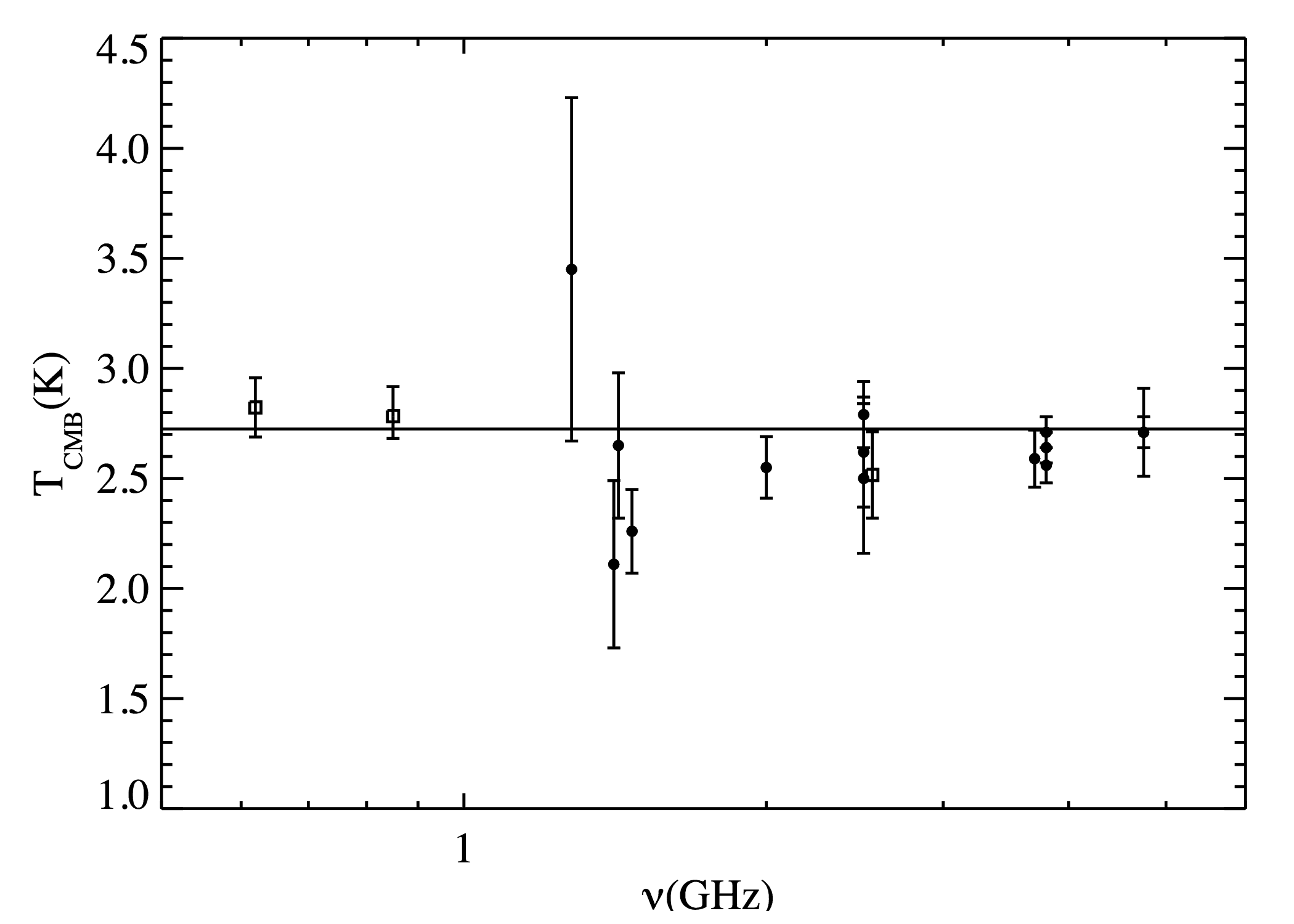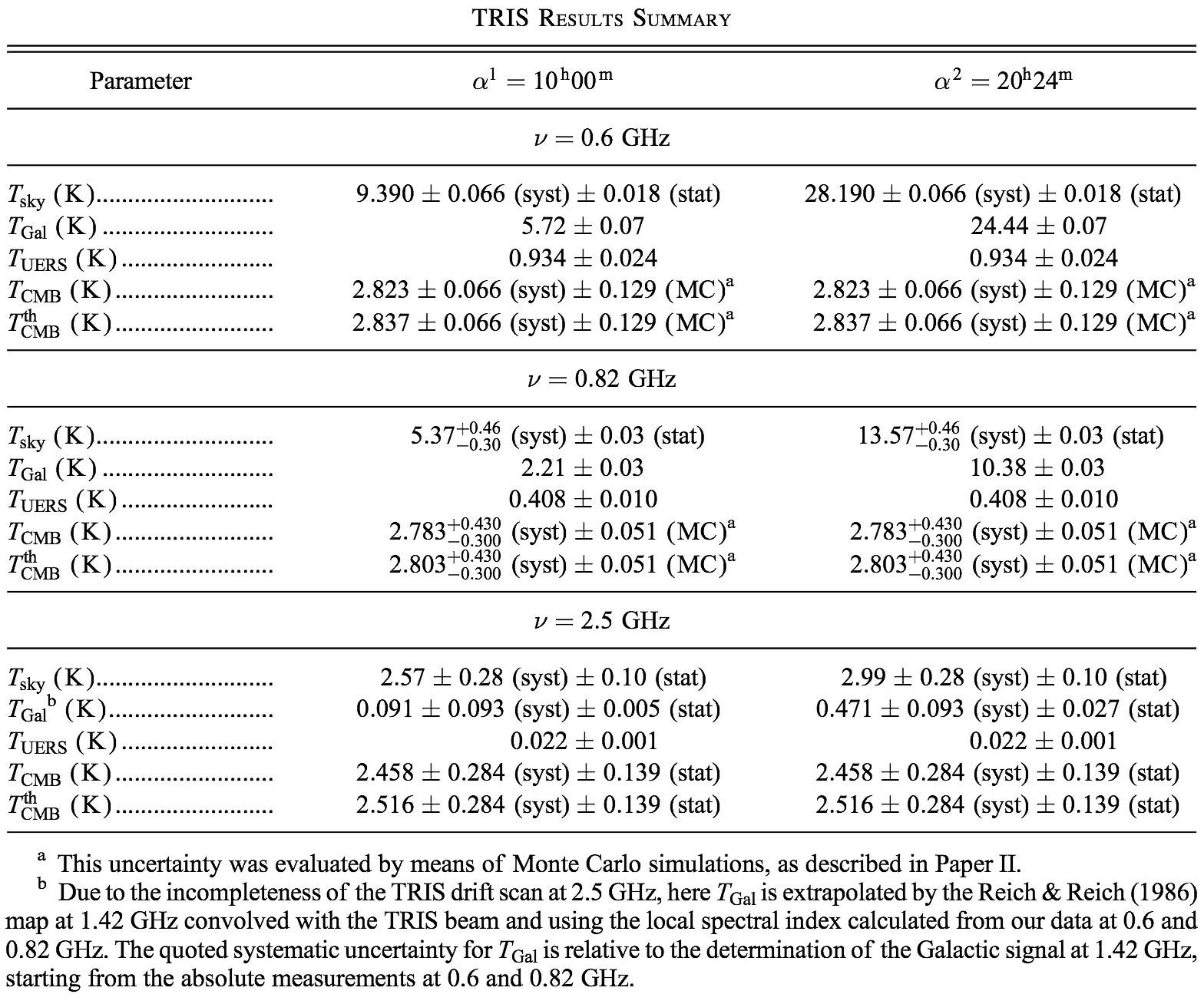

TRIS Data Products at LAMBDA
The TRIS experiment performed absolute measurements of the sky brightness in a sky circle at declination +42 degrees at the frequencies 0.60, 0.82, and 2.5 GHz, using geometrically scaled antennas with identical beams (HPBW 18 degrees x 23 degrees). The TRIS group used the data to separate the different contributions to the sky emission and to evaluate the absolute temperature of the CMB at 0.60, 0.82 and 2.5 GHz.
Zannoni et al. 2008 ApJ 688, 12, ADS; Gervasi et al. 2008, ApJ, 688, 24, ADS; Tartari et al. 2008, ApJ, 688, 32, ADS.
 |
| Recent and most sensitive CMB temperature measurements below 5 GHz. TRIS data are marked as open squares. An improvement of more than a factor of 10 was gained at frequencies below 1 GHz. The data plotted are available here |

|
| TRIS Data Products ▼ |
|---|
| Product Download Page |
Description | No. of Files/Size |
| 0.6 GHz Drift Scan |
Absolutely calibrated 0.60 GHz drift scan along a 24h right ascension circle at declination +42 degrees. |
1 file 3.7 KB |
| 0.82 GHz Drift Scan |
Absolutely calibrated 0.82 GHz drift scan along a 24h right ascension circle at declination +42 degrees. |
1 file 3.7 KB |
| 2.5 GHz Sky Temperatures |
Absolute 2.5 GHz sky temperature measurements for 6 positions at declination +42 degrees. |
1 file 0.4 KB |
| Beam Profile |
H plane and E plane beam profile cuts. The beam profile is the same at 0.6, 0.82, and 2.5 GHz. |
1 file 1.8 KB |

